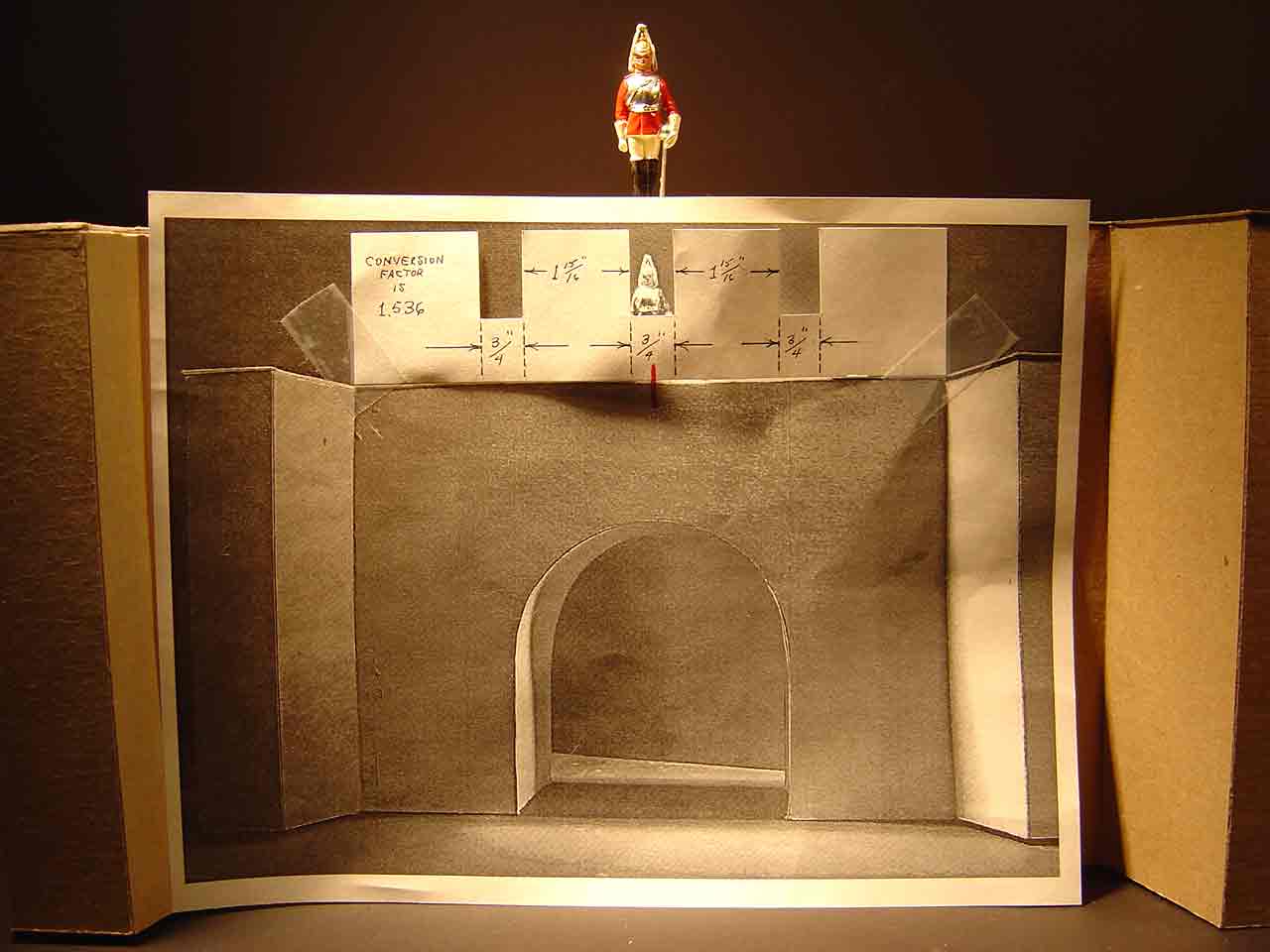--more--

To use the conversion factor, we measure the widths and heights of the merlons and crenellations in the template. We then multiply each of these measurements by the scale conversion factor (1.536).
For example, the measured width of a crenellation in the template is 1/2 inch. When we multiply 1/2 inch by 1.536, we get 0.768 inches, which is approximately three-quarters of an inch. This is the crenellation width we decided upon in Plate 51. The crenellation template can now be used to provide the measurements of the actual crenellated battlement.
Go to top of page